World War I
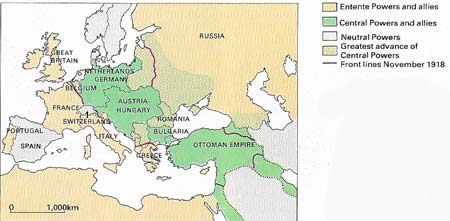
Figure 1. Most of the fighting took place in Europe; the main battlefields were in northern France and Belgium, Poland, Russia, and Italy. Overseas campaigns were fought in Mesopotamia and the Middle East and in the German colonies in Africa.
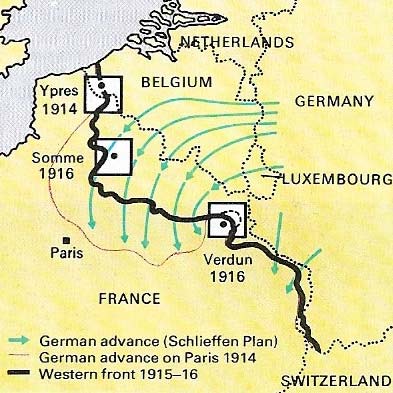
Figure 2. The Western front was the decisive battleground of the war once the Schlieffen Plan had failed to eliminate France, it was here that the bloodiest battles were fought, as both sides poured in men and materials to achieve the vital breakthrough. In 1918 the impetus of a new Allied offensive backed by the fresh American armies convinced the Germans that the war was lost even before the Allies reached them.
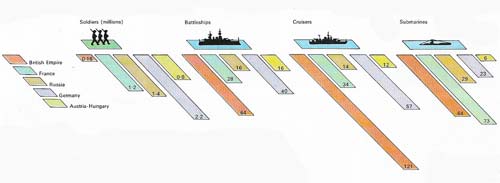
Figure 3. The strength of the two alliances was reasonably well balanced, as what Britain lacked in troops she made up in naval strength. It was this balance that made World War I a war of attrition that was to result in horrific loss of life and massive destruction. Figures for troops quoted here are those of the standing armies. Mobilized forces were approximately: Britain 711,000; France 3.5 million, Russia 4.4 million, Germany 3.8 million (in emergency a maximum of 8.5 million could be raised), Austria-Hungary 3 million.
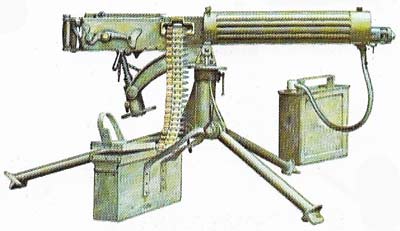
Figure 4. The generals of 1914 had been trained to think of mobile offensive warfare, but the relatively new British Vickers medium machine gun with its lethal affect on exposed infantry was among the armaments that upset their view. Once the exhausted armies had dug in, artillery and machine guns ensured that trench warfare would continue. Commanders tried for the rest of the war to break the stalemate, but massive infantry attacks proved hideously ineffective.
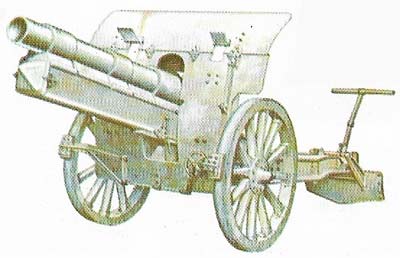
Figure 5. A German 150-millimeter howitzer was typical of the heavy artillery used to try to destroy opposing defenses, enormous quantities of guns and ammunition were used in prolonged bombardments.
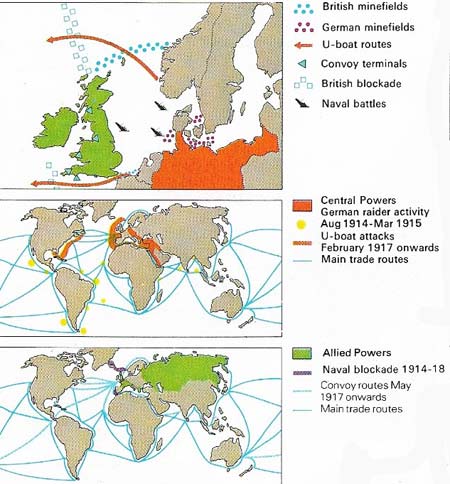
Figure 6. The two great fleets had only one major battle during the war. The Germans used long-range raiders and submarines, while the British warships mounted an effective blockade of German ports.

Figure 7. Germany had more submarines than Britain at the beginning of the war. This is one of the Class 31-37 U-boats. It was 64.7 meters (212 feet) long and fully submerged it weighed 880 tons. It was armed with 24 500-millimeter (20-inch) torpedoes fired through four tubes. The attacks on British shipping were relatively ineffective during 1915–1916. However, after 1917 the Germans came close to starving Britain into submission.
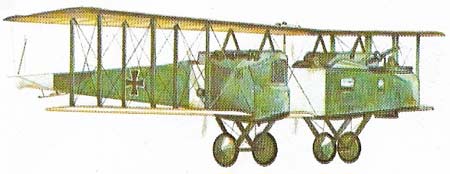
Figure 8. German Gotha IIIs we're used for armed reconnaissance over the battlefields as well as for bombing. Developed to take over the Zeppelins' role in bombing English cities, they arrived too late in the war to make a significant difference. After their attacks on England (in which they claimed 857 lives) the Gothas were switched to the French theater.
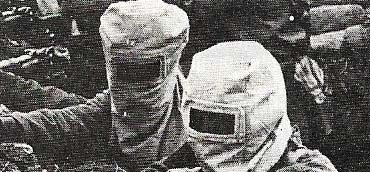
Figure 9. Gas was first used in 1915 by the Germans to try to break the trench stalemate. It proved inefficient, difficult to control and easy to detect. The masks these soldiers wear were early attempts at protection.
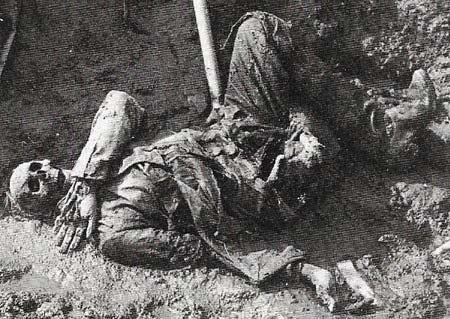
Figure 10. For future generations World War I was to become a symbol of senseless slaughter and destruction. Not only did more than 10 million soldiers die, but the war affected every level of society in all combatant countries. Wholesale conscription was introduced and governments took dictatorial powers to control economies and to ration food and supplies. The war radically changed the map of Europe, sweeping away the German, Austro-Hungarian and Russian empires and setting up smaller states in Eastern Europe.
On 28 June 1914, the heir to the Austro-Hungarian throne, Archduke Franz Ferdinand (1863–1914), was assassinated in Sarajevo, Bosnia, by a pro-Serbian student, Gavrilo Princip (1893–1918), precipitating a chain of diplomatic maneuvers that ultimately led to war. The Balkans had long been a center of conflict. Serbian nationalism threatened the shaky Austro-Hungarian Empire, whose collapse would isolate her ally, Germany, in Europe. Russia, Serbia's ally, was also involved in the Balkans because whoever controlled them would be in control of Russia's main trade route.
The first battles on both fronts
Germany pressed her ally to take firm action and on 28 July Austria-Hungary declared war on Serbia. Two days later, Russia mobilized and Germany responded by declaring war on Russia on 1 August. Germany's Schlieffen Plan, drawn up to avoid a war on two fronts, necessitated an all-out attack through Belgium to knock out France, Russia's ally, quickly. Germany therefore declared war on France on 3 August and invaded Belgium the next day. As a result, Great Britain came to Belgium's defense.
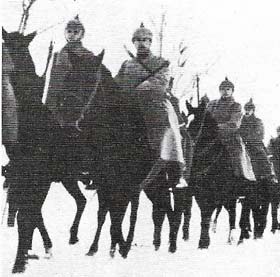 |
| Cavalry, like this German troop, found few outlets other than the Eastern front, where the war was more fluid and the trench system never evolved. The cavalry was used chiefly for reconnaissance. |
By 9 September German forces had advanced to the Marne where the British and French were able to halt them. At the end of October each side faced the other in trenches running from the English Channel to the Swiss frontier. In the east, the vast, ill-equipped Russian army had lumbered into East Prussia where it was crushingly defeated on 20 August at the Battle of Tannenberg. Throughout 1915 the Germans remained on the defensive in the west, allowing the Allies to exhaust themselves in a series of futile attacks, while launching a summer offensive in the east that hurled the Russians back more than 480 kilometers (300 miles).
Turkey had entered the war on the side of the Central Powers in October 1914. After a costly naval attack by the Allies, 75,000 Australian, New Zealand, British, and French troops tried to open a new front at Gallipoli at the mouth of the Dardanelles. The expedition failed to achieve surprise, scarcely advanced from the beaches and suffered heavy casualties until withdrawn in December. Thus Russia was effectively cut off from Allied supplies.
By the end of 1915 both sides realized that the war was going to be a prolonged affair. On 21 February 1916, the Germans assaulted Verdun in an offensive calculated by General Erich von Falkenhayn (1861–1922) to exhaust the French, rather than to achieve a breakthrough. By the end of June nearly 600,000 men had died in this action, but the French managed to hold on. The Russians under General Alexei Brusilov (1856–1926) launched an offensive that gained some territory with terrible loss of life and the British under Field-Marshal Sir Douglas Haig (1861–1928) attacked on the Somme, suffering 20,000 dead on the first day and gaining less than 8 kilometers (5 miles) in five months' fighting.
The war at sea
At the beginning of the war, the Royal Navy had begun a blockade of German ports, turning back neutral shipping (Figure 6). The Germans replied with submarine attacks (Figure 7), but had little success in 1915 and 1916 because sinking neutrals was banned. The two great battle fleets fought only one major action, at Jutland on 31 May 1916. The outcome was inconclusive, but the German surface fleet remained in harbor for the rest of the war. During 1916 the blockade caused severe food shortages in Germany, which led to widespread unrest. On 31 January 1917, the Germans launched unrestricted submarine warfare, and by sinking US shipping pulled the United States into the war. Only the new convoy system prevented Britain from being economically strangled.
The final offensive and Allied victory
On the Western front the French began a series of unsuccessful offensives; elements of their army mutinied in May 1917, but were brought under control during June by Marshal Henri Pertain (1856–1951).
Tanks were used en masse at Cambrai on 20 November, but their initial successes were not followed up. Italy had entered the war on the Allied side on 26 April 1915 and fought inconclusively against Austria-Hungary until a massive defeat at Caporetto on 24 October 1917 almost knocked her out of the war. In Russia the unpopularity of the war led to the overthrow of the tsar in March 1917. A provisional government launched another offensive but, after that had been thwarted, the Bolsheviks seized power in November and sued for peace. The Treaty of Brest-Litovsk in March 1918 gave Germany huge territorial gains in western Russia.
Aware that they must follow up success in the east with victory in the west before American help could arrive in force, the Germans opened a series of offensives under General Erich Ludendorff (1865–1937) from March to July 1918. They drove the Allies back to the Marne, but were again halted there. Then, strengthened by American troops, the Allies counter-attacked during August. A massive offensive launched on 26 September convinced the German High Command that the war was lost and they sued for peace. In early November anti-war and pro-Bolshevik risings took place, the kaiser abdicated on 9 November and an armistice was signed on 11 November. Austria-Hungary also collapsed in November after an Allied offensive.
 |
| The military casualties of the major powers were vast. France suffered the greatest destruction and the heaviest civilian and military losses. Never had a war killed so many people in so short a time, removing a whole generation of young men and scarring Europe for the next 20 years. |
